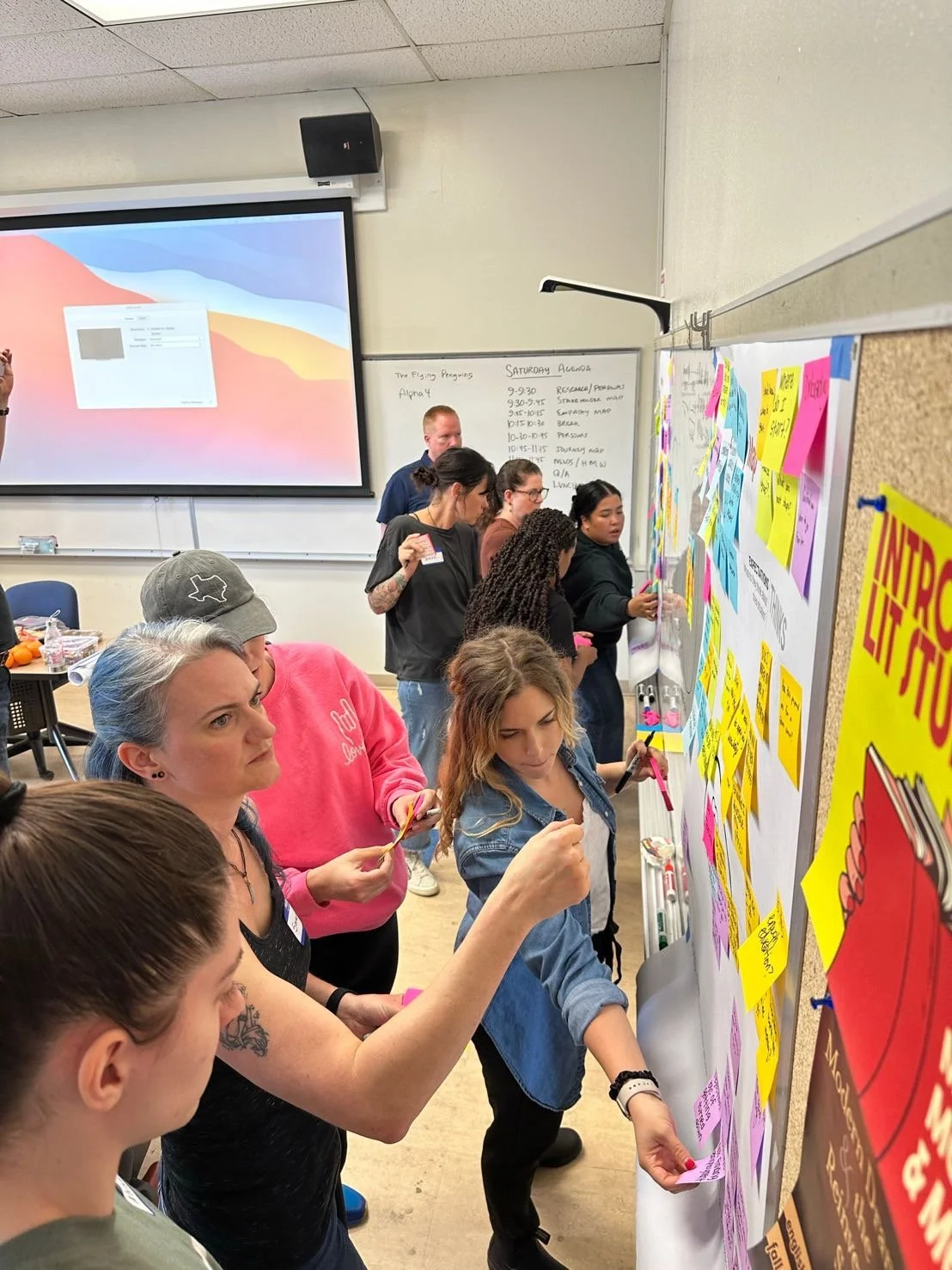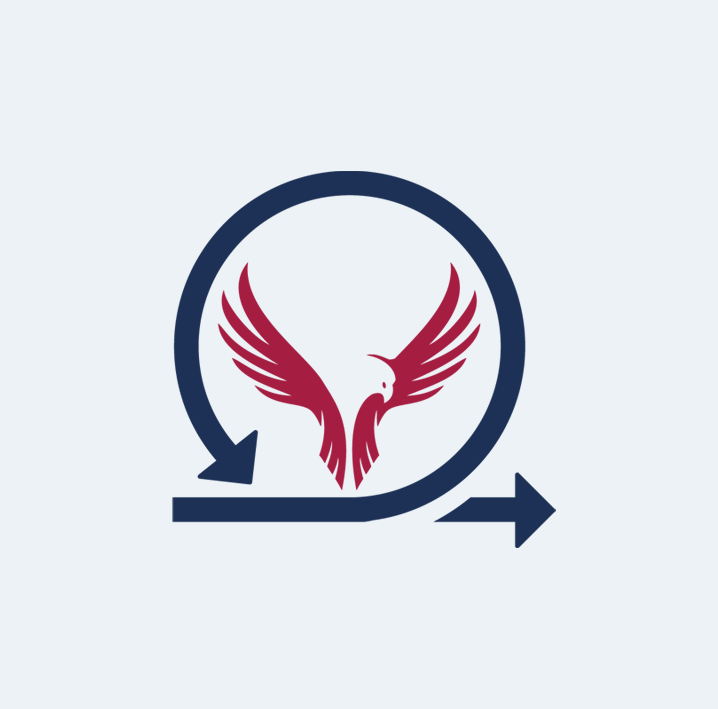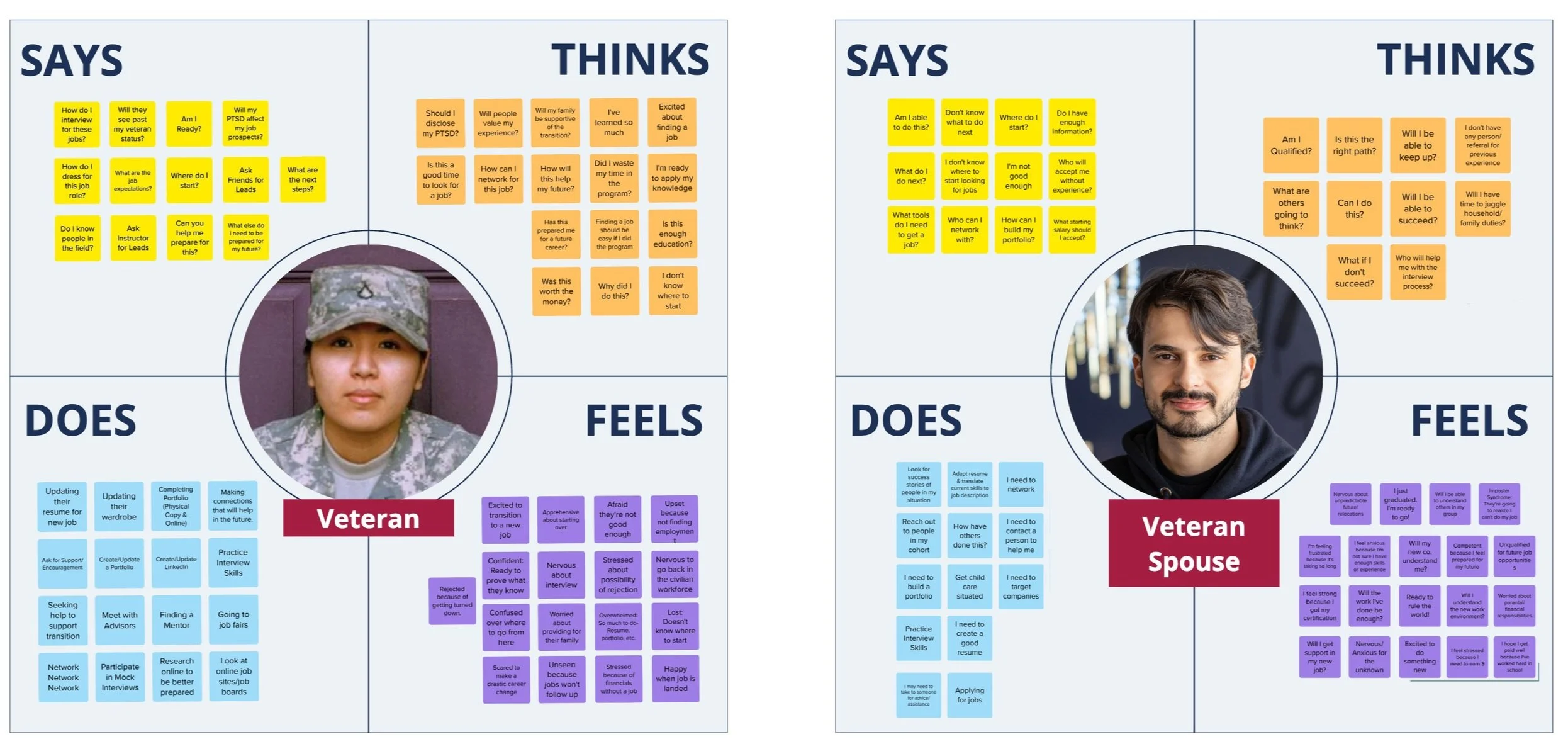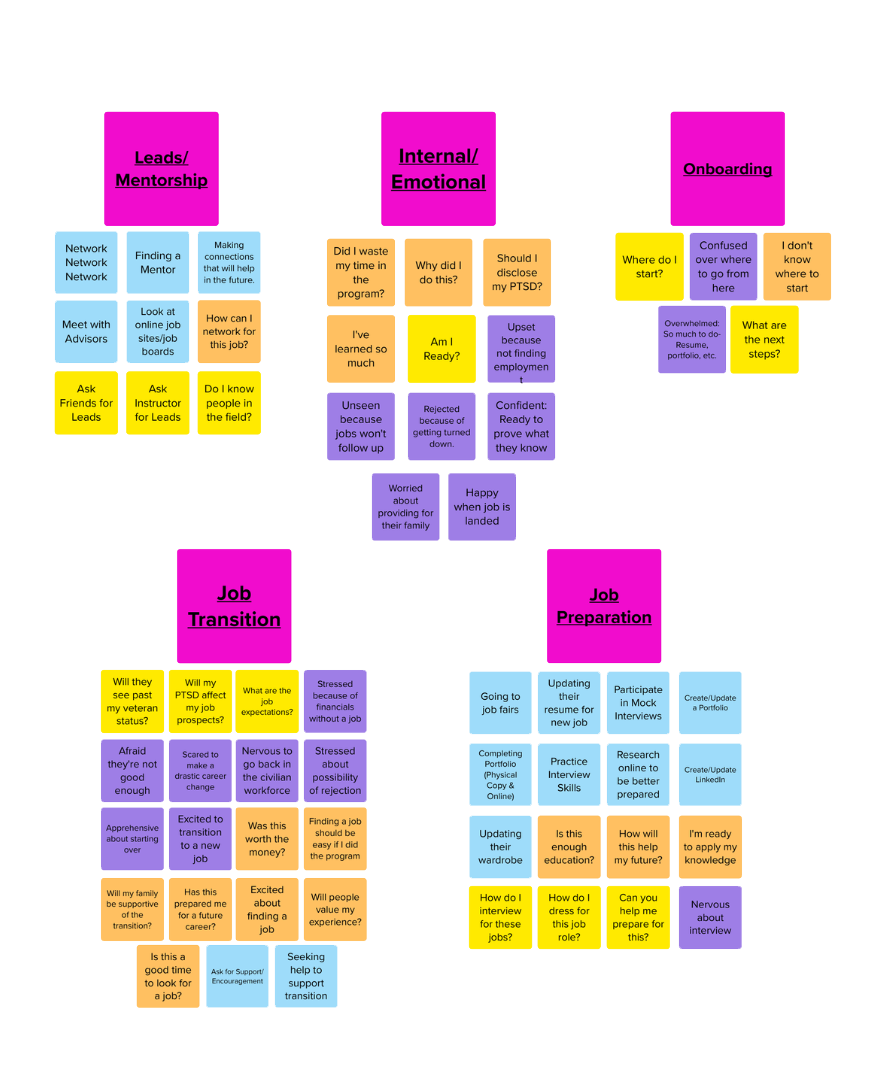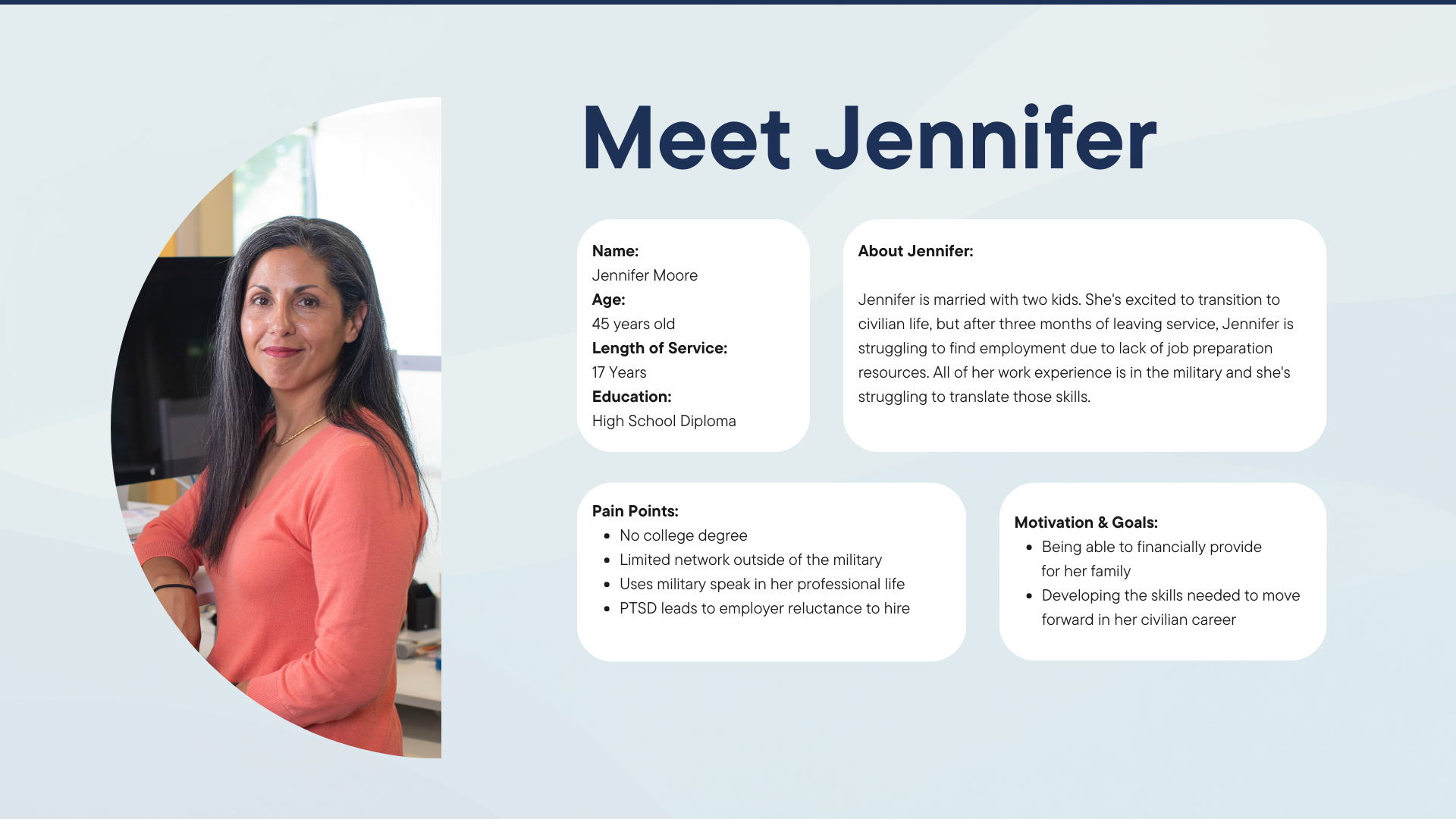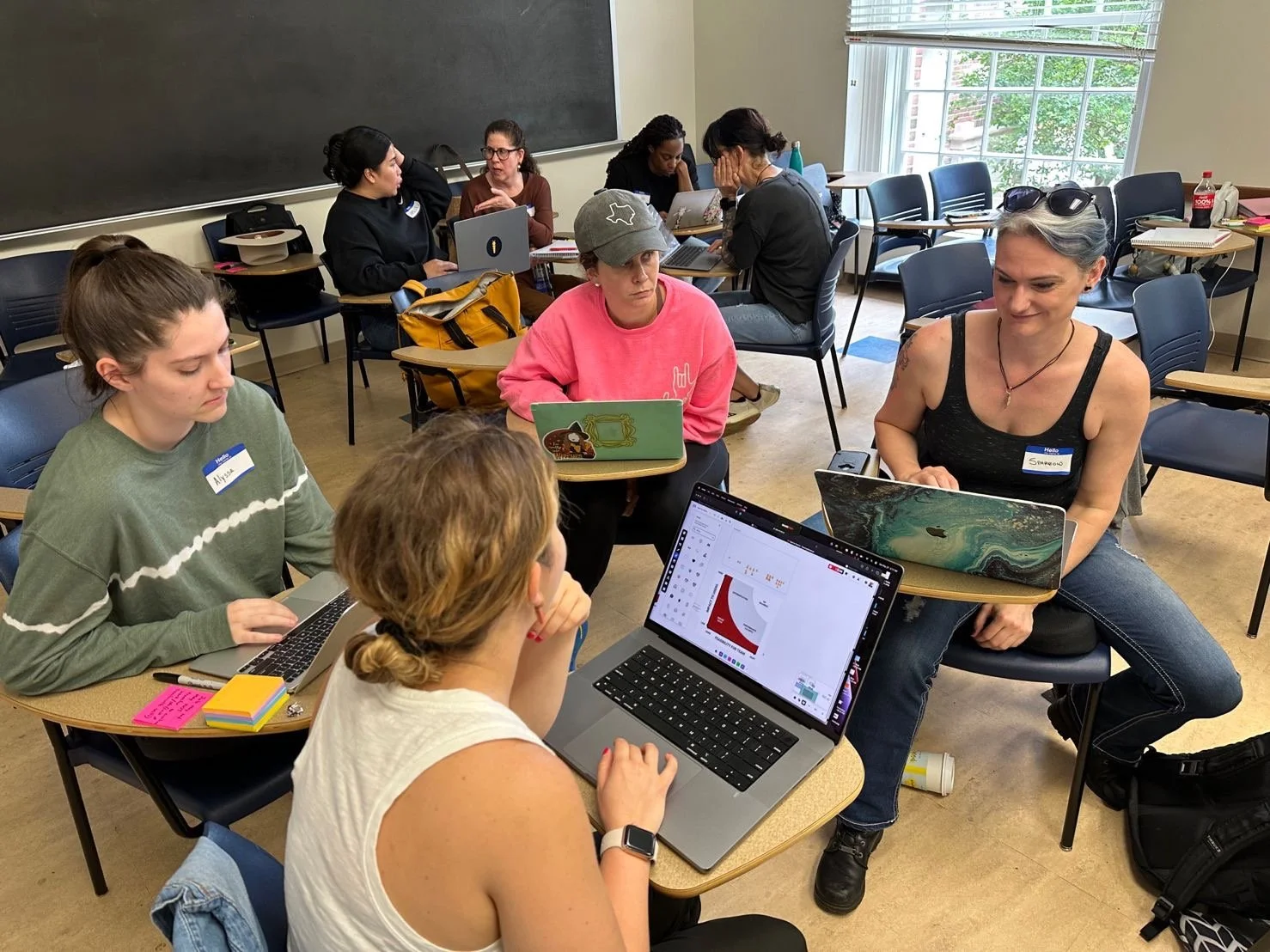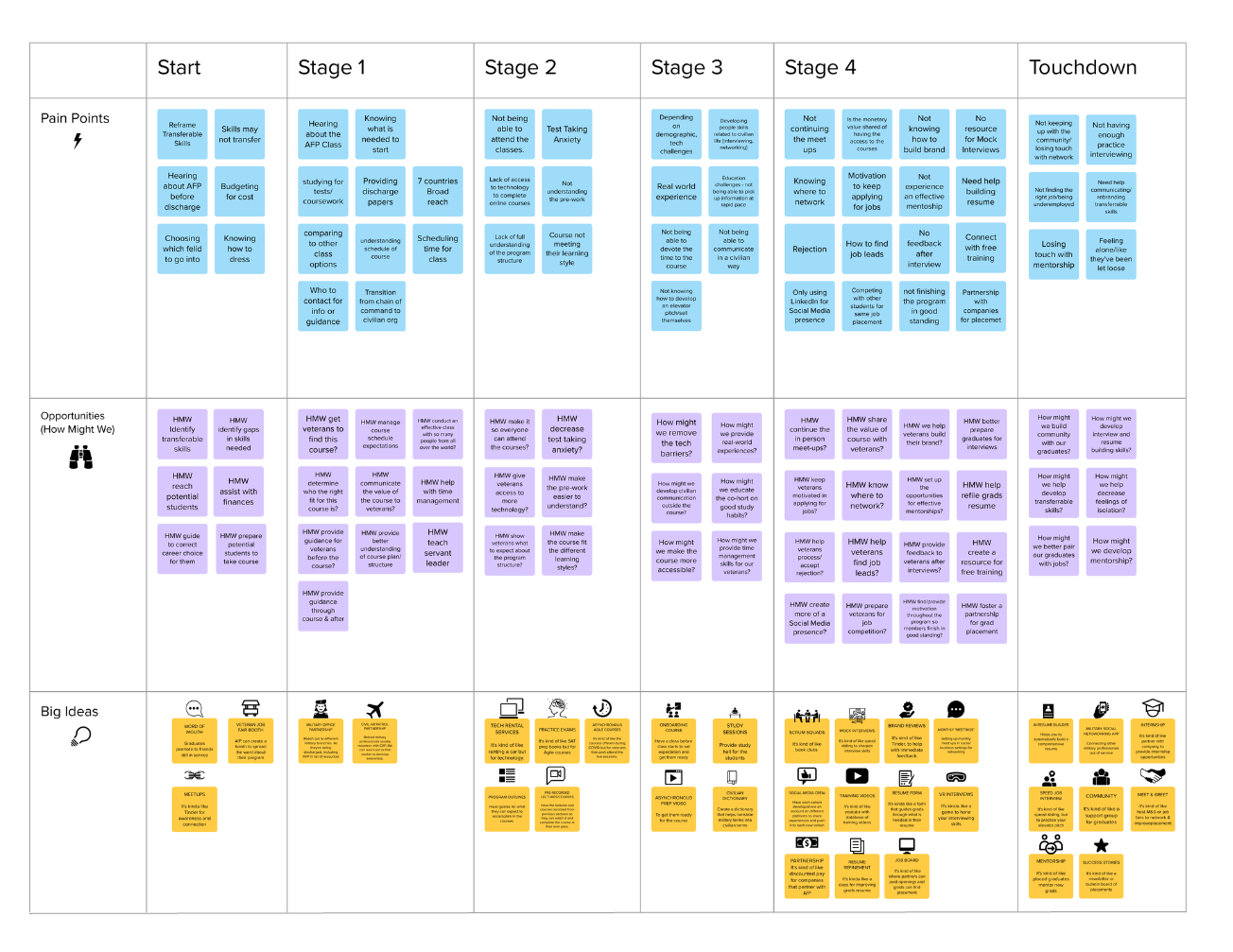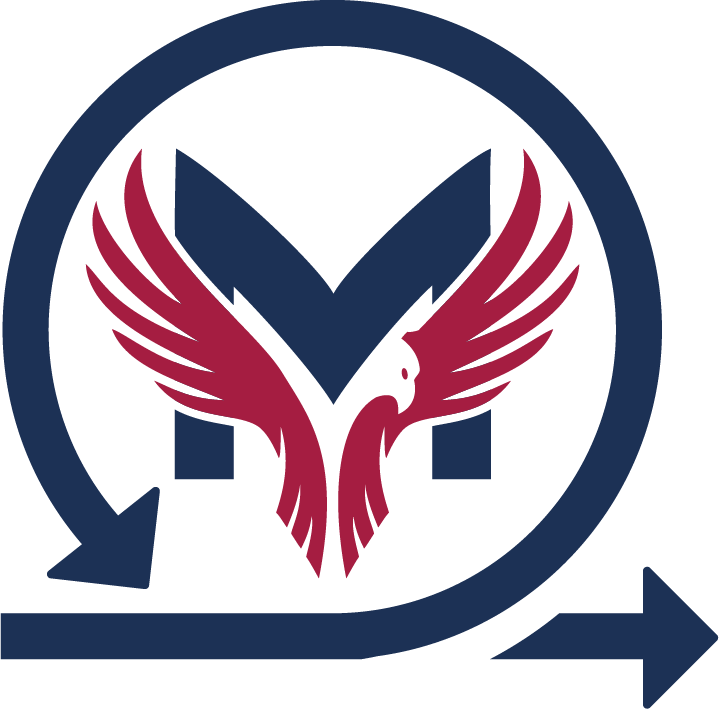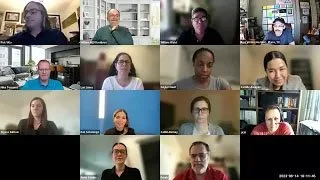Agile for Patriots
Overview
Agile for Patriots is a Dallas-based non-profit preparing military Veterans and their spouses for Agile/Scrum careers through training, coaching, certification, and practical experience. On this Design Thinking project, I served as Team Lead, Design Strategist, UX Designer, and UX Researcher.
Design Challenge
When veterans leave military service, they often struggle with two things: translating military skills to the civilian workforce and cultivating a community outside of the military. In this case, Agile for Patriots alumni were struggling with civilian job placement, which determined several of our goals:
Bridge the gap between AfP Alumni’s military service and job market
Build a civilian community they can lean on during this transition
Improve networking opportunities
Expand the services Agile for Patriots provides
research
User research informed all of the design decisions for this Agile for Patriots project. In the beginning of the design process, I went on a data-collection mission in order to understand and empathize with Veterans. This was just some of the data I found:
1. Pew Research Center and U.S. Chamber of Commerce Foundation
2. https://www.ptsd.va.gov/
3. U.S. Chamber of Commerce Foundation (Veterans in the workforce)
4. Using peer support groups to enhance community integration of veterans in transition, Sawer et. al. 2010
Based on this data, we utilized Empathy Maps, Affinity Maps, User Interviews, and User Personas to determine our design methodologies.
Empathy Map
I built an Empathy Map with the Agile for Patriots stakeholders to better understand veterans transitioning into the civilian workforce. The Empathy Map is the first step to understand the primary user that I would be interviewing, which would be built into a set of user personas.
Affinity Maps
From there, we clustered common themes shown using an Affinity Map and came out with five key findings.
Veterans struggle to find mentorship and a network outside of the miliary
Veterans have an emotional hurdle when transitioning into civilian life
Veterans deal with career uncertainty and what next steps to take
Veterans could use some help when it comes to civilian job preparation
Veterans struggle with job transition from a military career to a civilian career
User Interviews
After getting initial alignment during the empathy map phase, my team and I interviewed 6 users, and I led two of those interviews. I wrote a discussion guide and discovered a few key findings:
Mentorship is crucial to work through PTSD and job transitions in the civilian world
You lose a lot of your network when leaving military service
There are unspoken rules in the civilian job market that the military workforce doesn’t experience
“Networking and building relationships outside the military is a big issue. It’s easier in the military world, because you’re on the same base and you get to know people faster. With civilian life, you need to be more intentional.” ”
User Personas
I built User Personas to synthesize the research gathered in our user interviews, empathy mapping, and research. Through these personas, we were able to understand the user’s motivations, needs, and potential backgrounds. These two personas highlighting Agile for Patriots alumni helped us determine our design decisions.
Design
After completing the research, I started the design phase of the project, which included journey mapping, ideating, narrowing downing to final ideas, and developing a storyboard to show how the alumni engage with the design recommendation.
Stakeholder Map
We first developed a stakeholder map to visualize and understand all the individuals affected.
Journey Map
I created a journey map to explore the peaks and valleys of going through the Agile for Patriots program. The User Journey Map was built to determine current pain points, gaps, and areas of opportunities to improve the experience for Agile for Patriots alumni.
After coming up with as many Big Ideas as possible, we plotted them on a feasibility scale to determine the ideas we would explore further.
SOLUTION
Based on all the work above, we realized that what the alumni needed was mentorship to be integrated as part of the program. As a result, we created the Patriot Mentorship Program, whose mission is to bridge the gap between military service and the job market, fostering a community where veterans thrive and contribute their unique strengths. For Agile for Patriots, we created a Minimal Viable Product they could develop fairly quickly, and provided ideas for possible iterations/future states.
What is it?
The Patriot Mentorship Program connects students with experienced mentors to boost their career. With this program, the learning experience is personalized, interactive, and transformative.
How it works?
Our mentors specialize in bridging the gap between your military experience and civilian job expectations. They'll help you translate your skills, highlight your strengths, and position you as a valuable asset to employers. With access to industry-specific resources, practical exercises, and real-world examples, you'll gain the knowledge and confidence to thrive in your new career.
Path to Integration
Future State
Once Agile for Patriots has implemented the robust Patriot Mentorship Program, they can expand to the Patriot Portal, an all-inclusive internal platform designed specifically for Agile for Patriots alumni entering the civilian workforce. The platform will include a comprehensive range of services and resources to enhance their job search, foster connections, and facilitate a successful transition into civilian careers.
Features would include:
Alumni Network
Mentorship Program
Interview Prep Program
Tutorial Videos + Resources
Job Board
Event Meetup
Internal Chat
The first four features would already been deployed and in use. This portal will bring an extra element of support for the AfP alumni.
Storyboard
By storyboarding the user story, we’re able to visually communicate their experience to stakeholders.
Validation
We presented our findings to the Agile for Patriots team, and they were grateful and receptive for the feedback. They’re going to take it to the Board and determine next steps.
“I loved the thinking of using Jira and LinkedIn—integrating tools they will already need to be successful at getting a job. I love this idea and am so grateful.”

